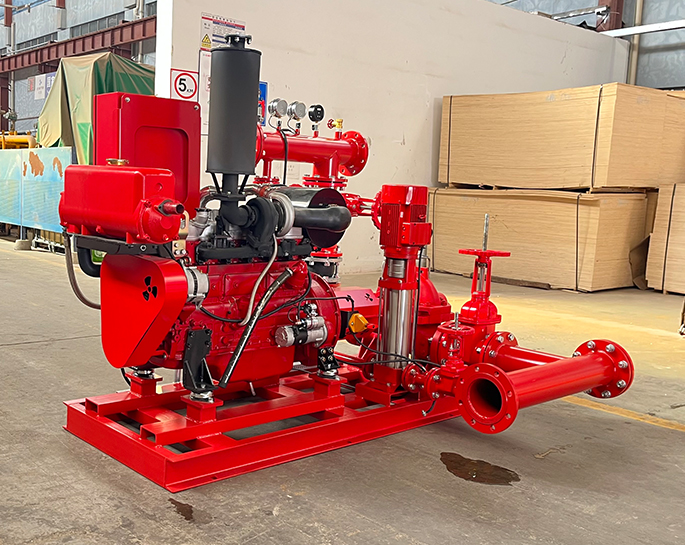Fire pump suction tanks play a crucial role in providing a reliable and immediate water supply to fire pumps during emergencies. The main functions and considerations for sizing fire pump suction tanks in different applications include:
1. **Water Supply Augmentation:**
- Fire pump suction tanks serve as a reservoir of water to augment the water supply available to fire pumps. They ensure a consistent and immediate source of water, especially in cases where the primary water supply may be insufficient or temporarily unavailable.
2. **Preventing Cavitation:**
- Suction tanks help prevent cavitation, a phenomenon that occurs when the water supply to the fire pump is insufficient. Cavitation can lead to damage to pump components and reduce pump efficiency. The tank ensures a steady and sufficient water flow to the pump, preventing cavitation.
3. **Meeting NFPA Requirements:**
- The National Fire Protection Association (NFPA) provides guidelines for sizing fire pump suction tanks. NFPA standards, such as NFPA 20 (Standard for the Installation of Stationary Pumps for Fire Protection), outline requirements for the size and configuration of suction tanks to ensure an adequate water supply.
4. **Sizing Considerations:**
- The size of the suction tank is determined by factors such as the required water flow rate, the duration of operation, and the characteristics of the water supply. The tank should be sized to provide enough water to meet the demand during the expected duration of fire pump operation.
5. **Tank Configuration:**
- Suction tanks can be configured in various ways, including vertical tanks, horizontal tanks, or multiple interconnected tanks. The configuration is chosen based on factors such as available space, system layout, and specific project requirements.
6. **Gravity or Pump-Assisted Tanks:**
- Suction tanks can be gravity-fed or pump-assisted. Gravity-fed tanks rely on the natural flow of water, while pump-assisted tanks use auxiliary pumps to transfer water to the fire pump. The choice depends on the specific needs and characteristics of the installation.
7. **Inlet and Outlet Design:**
- Proper design of tank inlets and outlets is critical to ensure efficient water flow and prevent air entrapment. NFPA standards provide guidelines for inlet and outlet configurations.
8. **Site-Specific Conditions:**
- Sizing considerations also take into account site-specific conditions such as elevation changes, friction losses in the piping system, and variations in water supply pressure.
It's essential to consult relevant codes and standards, such as NFPA 20, as well as involve a qualified fire protection engineer in the design and sizing of fire pump suction tanks. The goal is to ensure that the fire pump system is capable of delivering the required water flow for the specified duration, meeting the demands of fire protection and safety standards.



